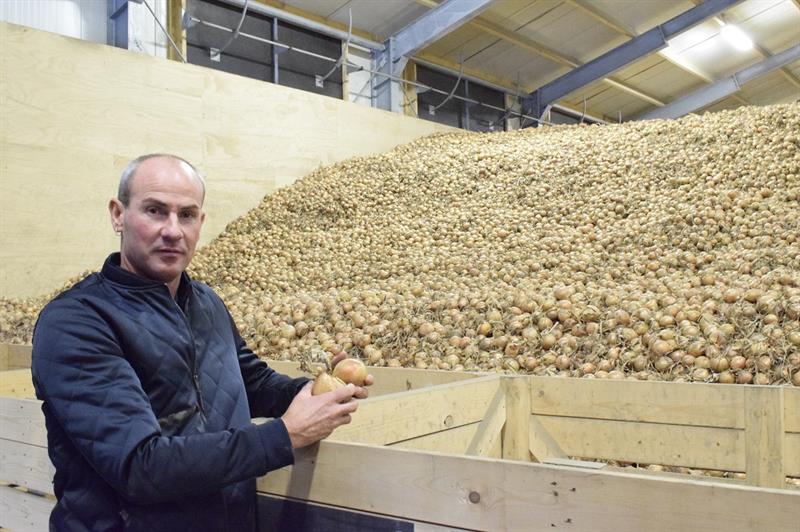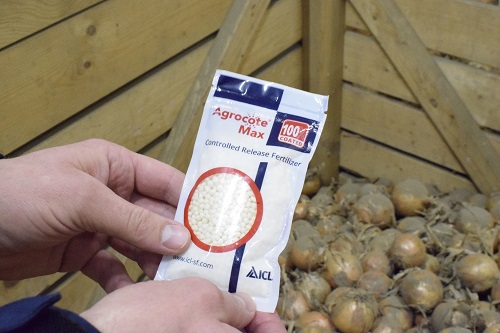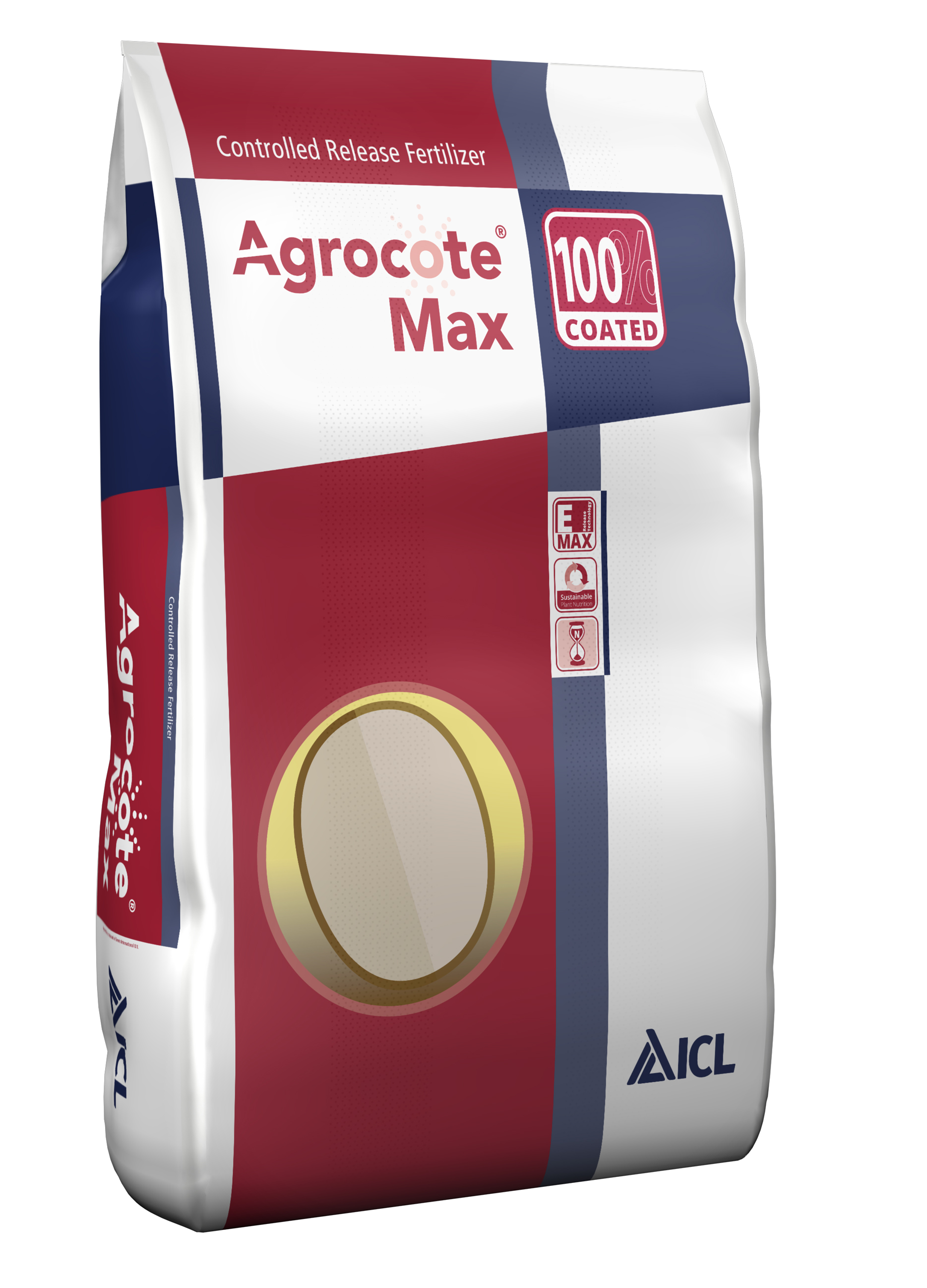The Netherlands is home to a wealth of innovative arable farmers. Arable farmer William de Jonge also embraced this pioneering spirit and first started using controlled-release fertilizer on onions in 2017. “I have only been using Agrocote Max for one year", states De Jonge. “But I can already confirm that it has worked great for the onions.”
Source: AkkerbouwActueel (NL)
His vision is based on sustainability, using the soil responsibly, and focusing on quality. With this approach in mind, De Jonge searched for a product that would continually release nitrogen. “This is especially beneficial for onions, which are a real quality product, where you want a fertilizer granule that releases nutrition to the plant in a controlled manner. This seemed like the perfect product. I didn't notice any color difference throughout the season and there was no difference in yield in comparison with standard fertilizers. In terms of ease of use it also has its benefits. You only have to apply Agrocote Max once, after which no further fertilizer is needed. This means that I am no longer dependent on weather conditions for a successful fertilizer application. It is especially important for onion cultivation that it is practical to use. You need a good, hard, uniform granule that is easy to apply. In my business, I try to keep my carbon footprint as low as possible, and then you can't apply the fertilizer at a twelve-meter range. I applied Agrocote Max at a distance of 45 meters from the permanent paths.”


Proven technique
Controlled-release fertilizers have been used in horticulture for fifty years. Now that ICL has developed a new coating technology, controlled-release fertilizers are now also available for use in agriculture. “We started testing Agrocote Max in practice five years ago,” states Roel Bloemert. “The results up until now have been really good.” Coated fertilizers work really simply: the basis is a urea granule with a coating, or membrane. The granule attracts moisture from the environment which ensures that the nutrients in the granule are dissolved. Through osmosis, (concentration variation, ed.) the nutrient solution is pushed through the coating (membrane). Once the concentration level is higher outside of the granule than inside, the osmosis process stops. “You could see it as a pump that pushes a part of the nutrient solution outside every day to give the plant its daily nutrition.”
De Jonge applied the fertilizer shortly after sowing, as this is what the onion plants require. In the initial growth phase, the plants don't immediately require nitrogen. It is only in the later phases that the water needs are replaced by the need for nitrogen. “I apply the fertilizer to stimulate crop growth, as my onions stand in wheat stubble. We applied fertilizer on the land and placed a green manure fertilizer. There has to be enough time to convert all this organic material, and this requires nitrogen. So I apply the fertilizers to the soil as soon as possible after sowing.
C/N ratio
De Jonge had been searching for years for controlled-release fertilizers which also promote the health of soil life. “There are other kinds of nitrogen fertilizers that have nitrification inhibitors or urea inhibitors. This does not fit in with our vision to realize slow release in a natural way. Because Agrocote Max releases nitrogen in a controlled manner, it avoids salt peaks and makes it a beneficial fertilizer for soil life. Agrocote Max is also the only fertilizer that determines its release based on temperature, meaning that it is easier to manage. Combined with the low costs, this ensures maximum returns for the arable farmers that use this product.”
It was also the farmers who requested us to make this product usable and affordable for the arable farming sector. Roel Bloemert says, “ICL has always known that controlled-release fertilizers would be profitable for arable farming crops. This feeling was confirmed from the very first moment that we launched Agrocote Max. Everyone who has used the product has responded positively.” De Jonge has also been pleased with the effects, even though he has only been using Agrocote for one year. “It's too early for any definitive results, after just one year, but what I can say is that it certainly doesn't have a negative effect on cultivation. I first wanted to see if the product would perform at the right moments. In terms of yields and growth I haven't noticed any difference with previous years. That confirms for me that it works.”
Five-step plan
Using Agrocote Max is part of De Jonge's overall concept. Soil fertility is at the center of the five-step plan. “Soil analyses are the foundation of the step-by-step plan,” explains Nutma. “In the first step we look at the ratio of calcium, magnesium, and potassium to the clay-humus complex. This is vital for soil structure and pH values. The second step assesses the activity of soil life using the values obtained from the soil analyses. The third step, and this is probably the most difficult one, is to maintain or improve the organic matter in the soil. For this, we compare the percentage of organic matter to the percentage of clay. In clay soils this percentage is often too low and therefore an important point for consideration. In step four, the trace elements (micronutrients) are supplemented and in step five, we supplement the major elements.
Roughly speaking, steps one to three were developed to supply the soil with nutrients and the last two steps to feed the plant. “That is inherently different to how we used to do things,” says De Jonge. “Ten to fifteen years ago, we usually implemented fertilization advice straightaway. Now, we first see if there is an imbalance in the soil and restore the balance at the right moment with the right products. Agrocote Max ensures that soil fertility is maintained and forms a perfect part of step five of the plan.
Practical granules
De Jonge will continue using the fertilizer granule next season. “You have to use these products for a few years before drawing conclusions. My main concern is product quality. The nitrogen was released at the right moment this year despite the fact that we have seen all types of weather and temperature influences come by this growing season. Sustainability is also an important aspect for me. I don't do anything on narrow tyres. We apply everything at a distance of 45 meters and from permanent paths. This granule is really easy and practical to use in these conditions and is one of the reasons why I'm so satisfied with this product.”

